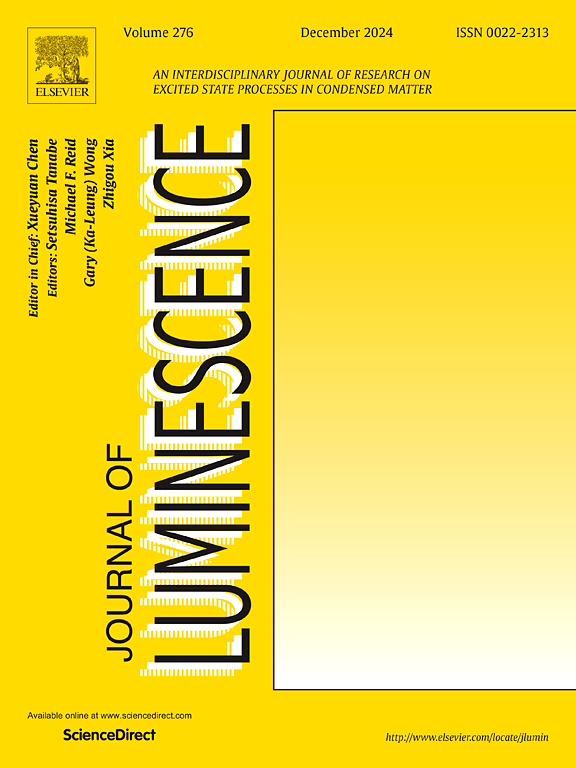发光过氧化物量子点:先进光子和量子计算应用的制造、建模和机器学习方法的进展
IF 3.3
3区 物理与天体物理
Q2 OPTICS
引用次数: 0
摘要
发光金属卤化物量子点(QDs),尤其是过氧化物量子点(PQDs),因其独特的光学特性以及在先进光子和电子设备中的重要应用而备受关注。这篇综述探讨了 PQDs 的合成、特性和应用,重点是它们在发光金属卤化物 QD 器件中的作用。综述首先讨论了 PQDs 的先进合成技术和表面工程策略,重点介绍了该领域的最新进展。然后研究了结构和光学表征技术,强调了了解 PQDs 中量子约束效应和发射机制的重要性。综述还包括对建模和模拟的讨论,讨论了预测和优化 PQD 特性的计算方法。书中详细讨论了实验研究和器件制造技术,展示了在将 PQDs 集成到光电器件方面取得的进展。还探讨了 PQDs 在发光器件、太阳能电池、传感器和光电探测器中的先进应用,强调了它们在提高效率和新功能方面的潜力。此外,还详细讨论了机器学习(ML)在 PQD 研究中的新兴作用,重点关注其在材料发现和器件优化中的应用。本综述探讨了发光 PQD 在量子计算应用中的潜力,重点关注其作为量子比特、量子门和量子存储器件的作用,强调了将 PQD 集成到量子计算架构中的最新进展、挑战和未来前景。综述最后概述了该领域的新兴趋势和未来发展方向,强调需要继续开展研究,以释放 PQDs 在先进光子和电子设备中的全部潜力。本文章由计算机程序翻译,如有差异,请以英文原文为准。
Luminescent perovskite quantum dots: Progress in fabrication, modelling and machine learning approaches for advanced photonic and quantum computing applications
Luminescent metal halide quantum dots (QDs), particularly perovskite quantum dots (PQDs), garnered remarkable attention for unique optical properties as well as critical use for advanced photonic and electronic devices. This comprehensive review explores the synthesis, properties, and applications of PQDs, with a focus on their role in luminescent metal halide QD devices. The review begins by discussing advanced synthesis techniques and surface engineering strategies for PQDs, highlighting recent developments in the field. Structural and optical characterization techniques are then examined, emphasizing the importance of understanding quantum confinement effects and emission mechanisms in PQDs. The review also includes a discussion on modelling and simulation, discussing computational methods for predicting and optimizing PQD properties. Experimental studies and device fabrication techniques are discussed in detail, showcasing the progress made in integrating PQDs into optoelectronic devices. Advanced applications of PQDs in light-emitting devices, solar cells, sensors, and photodetectors are explored, highlighting their potential for efficiency enhancements and novel functionalities. A detailed discussion on the emerging role of machine learning (ML) in PQD research, focusing on its applications in materials discovery and device optimization are also included. This review explores the potential of luminescent PQDs for quantum computing applications, focusing on their role as qubits, quantum gates, and quantum memory devices, emphasizing the latest advancements, challenges, and future prospects of integrating PQDs into quantum computing architectures. The review concludes with an overview of emerging trends and future directions in the field, emphasizing the need for continued research to unlock the full potential of PQDs in advanced photonic and electronic devices.
求助全文
通过发布文献求助,成功后即可免费获取论文全文。
去求助
来源期刊

Journal of Luminescence
物理-光学
CiteScore
6.70
自引率
13.90%
发文量
850
审稿时长
3.8 months
期刊介绍:
The purpose of the Journal of Luminescence is to provide a means of communication between scientists in different disciplines who share a common interest in the electronic excited states of molecular, ionic and covalent systems, whether crystalline, amorphous, or liquid.
We invite original papers and reviews on such subjects as: exciton and polariton dynamics, dynamics of localized excited states, energy and charge transport in ordered and disordered systems, radiative and non-radiative recombination, relaxation processes, vibronic interactions in electronic excited states, photochemistry in condensed systems, excited state resonance, double resonance, spin dynamics, selective excitation spectroscopy, hole burning, coherent processes in excited states, (e.g. coherent optical transients, photon echoes, transient gratings), multiphoton processes, optical bistability, photochromism, and new techniques for the study of excited states. This list is not intended to be exhaustive. Papers in the traditional areas of optical spectroscopy (absorption, MCD, luminescence, Raman scattering) are welcome. Papers on applications (phosphors, scintillators, electro- and cathodo-luminescence, radiography, bioimaging, solar energy, energy conversion, etc.) are also welcome if they present results of scientific, rather than only technological interest. However, papers containing purely theoretical results, not related to phenomena in the excited states, as well as papers using luminescence spectroscopy to perform routine analytical chemistry or biochemistry procedures, are outside the scope of the journal. Some exceptions will be possible at the discretion of the editors.
 求助内容:
求助内容: 应助结果提醒方式:
应助结果提醒方式:


